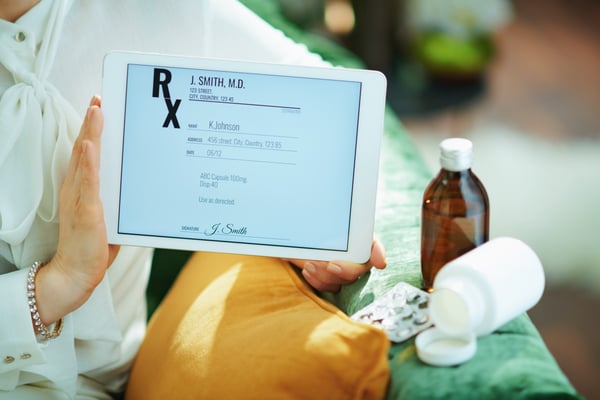Using Patient Education Videos to Support Preventive Care Strategies
As a healthcare provider, you know prevention saves lives. From routine screenings and lifestyle counseling to vaccinations and early detection,...
 When it comes to healthcare practices, we may not think of applying customer service best practices. However, shifting to patient-focused care means looking at how practice processes are impacting patients. While wondering what patients might prefer isn’t always a solution when it comes to care options, it is an option when it comes to practice operations.
When it comes to healthcare practices, we may not think of applying customer service best practices. However, shifting to patient-focused care means looking at how practice processes are impacting patients. While wondering what patients might prefer isn’t always a solution when it comes to care options, it is an option when it comes to practice operations.
Efficient and effective operations can provide an improved patient experience which, in turn, pays off for your practice. So, investing in tools like ePrescribing software can significantly improve the patient experience (and more). Wondering how? Let’s take a look.
Quick Links:
Patient experience is more than just the latest healthcare marketing buzzword; it's a crucial aspect that is significantly impacted by the effectiveness and efficiency of care delivery.
In fact, patient experience is a critical component of overall healthcare, encompassing every interaction a patient has with the healthcare system and your practice. From scheduling appointments and communication to receiving treatment and follow-up care, the patient experience goes beyond just the outcome. It sounds cliche, but it’s about the journey.
Perhaps more importantly, that experience directly impacts outcomes, patient satisfaction, and even the reputation of your practice.
First and foremost, patient experience plays a pivotal role in ensuring positive health outcomes. A positive experience encourages patients to actively participate in their care, engage with patient education efforts, follow treatment plans, and adhere to medication regimens. When patients feel heard, respected, and involved in their healthcare decisions, they are more likely to communicate openly with their healthcare providers, leading to better diagnoses and more effective treatment strategies.
Similarly, patient experience can have a huge influence on patient satisfaction and loyalty. Patients who feel valued and supported are more likely to recommend the healthcare practice to others and return for future care needs. Positive word-of-mouth endorsements can enhance the reputation of healthcare organizations, attracting new patients and bolstering community trust.
Beyond individual patient interactions, healthcare providers can streamline processes, reduce wait times, enhance communication, and improve patient access and convenience. Investing in patient-centered care not only improves individual experiences but also fosters a culture of continuous improvement within healthcare organizations.
In essence, prioritizing patient experience is not just a matter of compassion; it should be viewed as a strategic imperative for healthcare providers. To stay ahead of the curve and stand out to patients, you and your staff should always be looking for ways to improve the patient experience.
 Patient Barriers to Traditional Prescriptions
Patient Barriers to Traditional PrescriptionsOne of the most problematic areas of the patient experience has always been getting prescriptions filled. Even with the switch to EHRs and a digital transformation over the last decade, there are still some healthcare providers relying on traditional (paper) prescriptions. As we’ve discussed before, paper prescriptions come with their own concerns, some of which impact patients who may face barriers to filling paper prescriptions. Among those barriers:
Accessibility- It’s fairly easy for patients to misplace or lose paper prescriptions, resulting in delays or missed medication refills.
Convenience- Having to physically travel to both healthcare appointments, especially if they require frequent medication refills or approvals, and then to a pharmacy is inconvenient for many.
Time-consuming- The travel noted above as well as waiting at a provider’s office or pharmacy can be time-consuming and inconvenient for patients with busy schedules, transportation issues, families, and more.
Limited mobility- Patients with limited mobility may find it challenging to visit a doctor's office or pharmacy to obtain a paper prescription.
Communication barriers- Paper prescriptions may not always be legible. There’s either time spent translating or on the phone to clarify. In a best case scenario this is time-consuming; in a worst case scenario it can result in medication errors.
Financial costs- Whether it’s the cost of travel or the loss of time at work, some patients may incur expenses, some which are prohibitive, when it comes to getting to both a healthcare appointment and a pharmacy.
Privacy concerns- Patients may have concerns about the privacy and security of their medical information when using traditional paper prescriptions, especially if they are required to carry them around or share them with multiple parties.
Thankfully, one part of the digital transformation in healthcare has been the shift to electronic prescriptions. ePrescribing offers benefits such as improved accessibility, convenience, accuracy, and cost-effectiveness for both patients and healthcare providers.
Given the challenges noted above, it should come as no surprise that patients prefer ePrescriptions for a variety of reasons.
Patients often prefer ePrescriptions for several reasons:
Improved convenience- With ePrescriptions, patients can skip the step of dropping off and picking up physical prescriptions at the pharmacy. In some cases, the prescription has been sent before they even leave the provider’s office. Further, because there’s no drop off, pickup can happen at a patient’s convenience without multiple trips.
No more lost prescriptions- ePrescriptions are stored in the pharmacy's database, making it easier for patients to access them when needed, get refills, and for pharmacists to keep track of potential interactions.
Faster service- Since the prescription is transmitted electronically, pharmacists can start preparing the medication as soon as they receive it. This can lead to shorter wait times for patients at the pharmacy.
Improved safety and privacy- ePrescriptions can include checks for drug interactions and allergies, helping to ensure patient safety by minimizing the risk of adverse drug events or contraindications. Further, because the prescription is transmitted directly, there’s no risk of unwanted eyes on prescriptions, helping create trust between patient and provider.
All of these benefits for patients do double duty. They not only improve the service patients receive but they also make patients feel respected and help build trust. Afterall, the practice who values and respects their time, safety, and privacy, is more likely to consider their needs and concerns in other matters as well.
The impact of ePrescribing on patient satisfaction is significant because it addresses factors that can influence a patient’s experience with their healthcare provider.
As noted, ePrescriptions streamline service, not only saving time but also reducing frustration, contributing to higher levels of satisfaction among patients.
Further, because ePrescribing enhances medication accuracy and safety, providers and patients can be sure they’re receiving the correct medications at the right dosages. As a result, they feel more confident in their treatment plans and trust in their healthcare providers' competence, leading to increased satisfaction.
Moreover, ePrescribing promotes better communication between healthcare providers and patients. ePrescriptions often include detailed instructions and educational materials about medications, empowering patients to take an active role in their healthcare. Patients appreciate the clarity and accessibility of patient education information, which fosters a sense of partnership and trust between them and their providers.
Finally, ePrescribing supports continuity of care by facilitating seamless information exchange between different healthcare settings. Transitions of care are among the most challenging for ensuring medication adherence. But, with ePrescribing, shen patients transition between primary care providers, specialists, and pharmacies, their medication histories are readily accessible through electronic records. This continuity reduces the likelihood of treatment disruptions or duplicate prescriptions, enhancing patient confidence in the healthcare system and overall satisfaction with their care.
 Practice Benefits of ePrescribing
Practice Benefits of ePrescribingThus far, we’ve looked at why ePrescribing is a benefit for patients, and why they’d prefer it. The better news is, of course, that your practice benefits as well. While happier patients with greater satisfaction and trust is a significant win for any practice, there are additional benefits.
1. ePrescribing streamlines the prescription process. Instead of relying on handwritten notes or physical prescriptions, which take time to write, e-prescribing enables healthcare providers to send prescriptions directly to pharmacies electronically, and to do so on the fly. There’s no returning to desks or offices; there’s no consulting drug reference books; there’s no consulting patient records and histories. It’s all integrated into one system that simplifies and speeds up the prescription process.
2. Improved medication adherence means improved patient outcomes. Patient adherence to medication regimens is crucial for managing chronic conditions and preventing complications. ePrescribing, because it simplifies the prescription process, can contribute to improved adherence. This approach helps patients stay on track with their treatment plans, leading to better health outcomes.
3. Tailor your ePrescription software for your preferences, speeding up prescriptions. When it comes to most ePrescription solutions, healthcare providers can use these systems to customize medication regimens based on both prescriber preferences and factors such as allergies, drug interactions, and patient preferences. This personalized approach not only improves patient satisfaction but also leads to more effective treatment outcomes.
4. PMP/PDMP integration improves safety and saves lives. ePrescription software that integrates with your state’s prescription drug monitoring program can protect both you and your patients. Efficiency and accuracy are paramount when it comes to checking prescription data and having a single source of information regarding controlled substances is a powerful tool. Further, because some states mandate ePrescribing for controlled substances and prescription history checks, an ePrescription tool can help keep you compliant.
5. Improve prescription accuracy and reduce prescription errors. Prescription errors are dangerous and result in over 1 million ER visits yearly. Unfortunately, illegible handwriting, inaccurate information, abbreviations, are some of the primary causes and ePrescribing can prevent confusion and help avoid costly errors.
While improving the patient experience is a goal for many healthcare providers, finding situations where both patients and providers win is even better. ePrescribing is that kind of solution.
If you’re ready to see just how simple a switch it is, for safer, more efficient, and more effective prescriptions, book a demo with the iCoreConnect team today!

As a healthcare provider, you know prevention saves lives. From routine screenings and lifestyle counseling to vaccinations and early detection,...

There’s no denying that the AI boom is here. The American Medical Association reports that 66% of physicians are currently using artificial...

If only managing your practice’s revenue cycle came with a crystal ball. You could spot claim denials before they happen, predict when patients might...

ePrescribing software is no longer the new kid on the healthcare efficiency block. Though we’re seeing greater adoption, in part due to regulations...

For over a decade now, increasing numbers of states have been requiring prescribers to switch to electronic prescribing, most often for controlled...

These days, your smart fridge can order your groceries without reading the list you wrote on the kitchen counter, so why are healthcare providers...